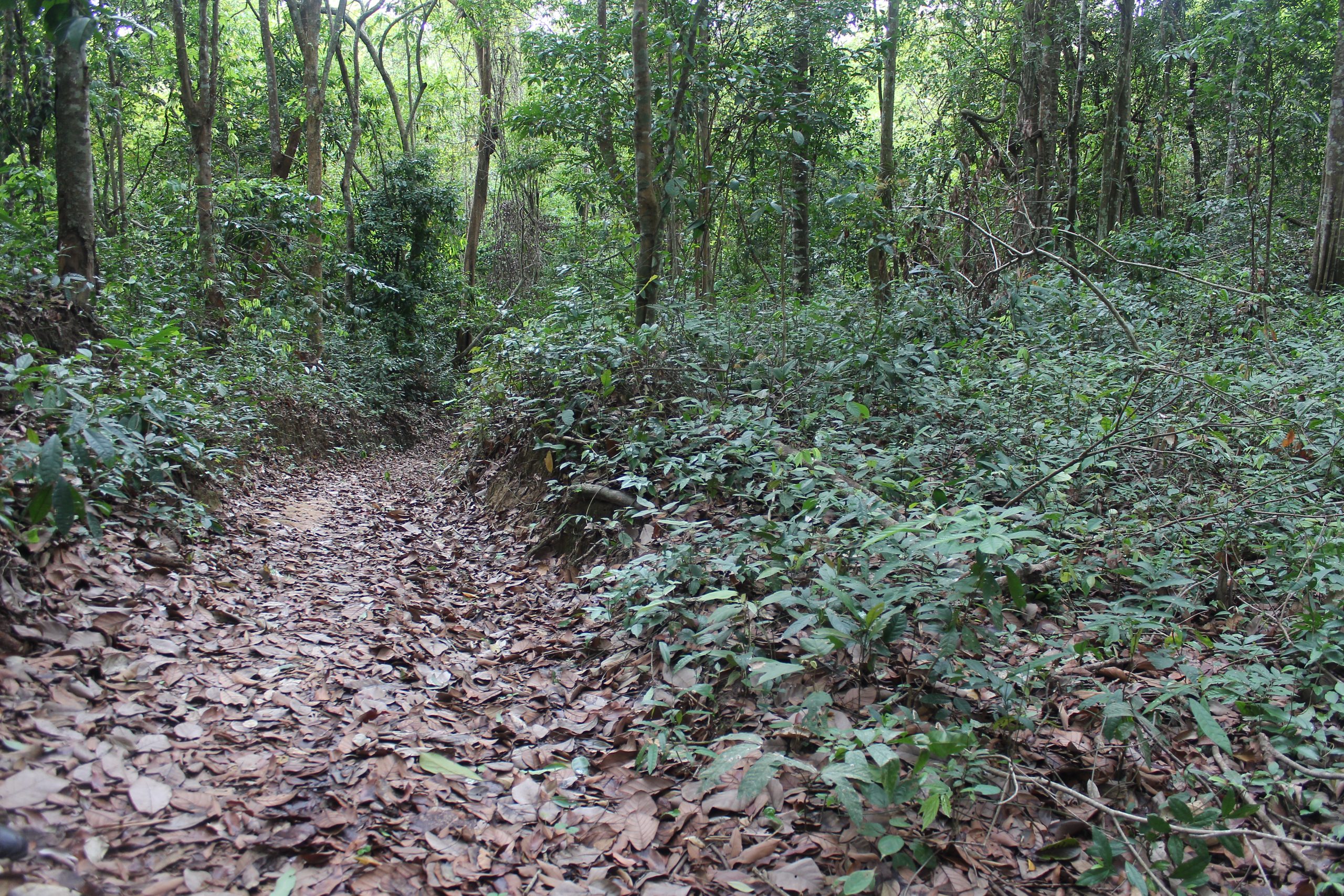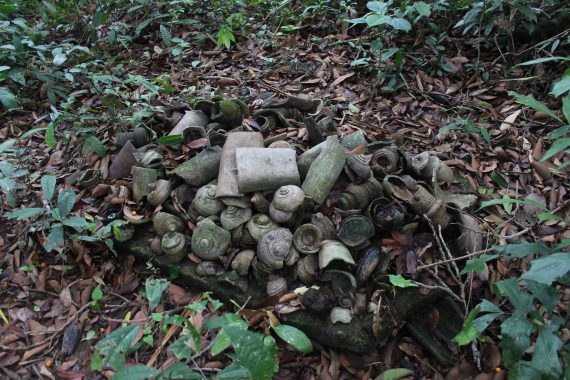Cambodia, Phnom Kulen, Angkor period (ruler: Jayavarman II), 9th century, Sandstone, laterite, and brick
In addition to building temples and other sacred sites, Phnom Kulen’s rulers and residents dramatically reengineered the mountain’s topography to create waterworks and agricultural areas. Research using LIDAR (Light Detection and Ranging) technology has revealed several large-scale dykes constructed of laterite and soil. Along the largest of these dykes are the remains of a great many green-glaze ceramics.

The ceramics are encrusted in the earth all along the pathway that lines the top of the dam. The large number of sherds indicates this was an important kiln site for ceramic production.

At certain points along the pathway, the vast expanse of the reservoir area can be seen below.

The jungle grows especially lush here because of the constant presence of water.




